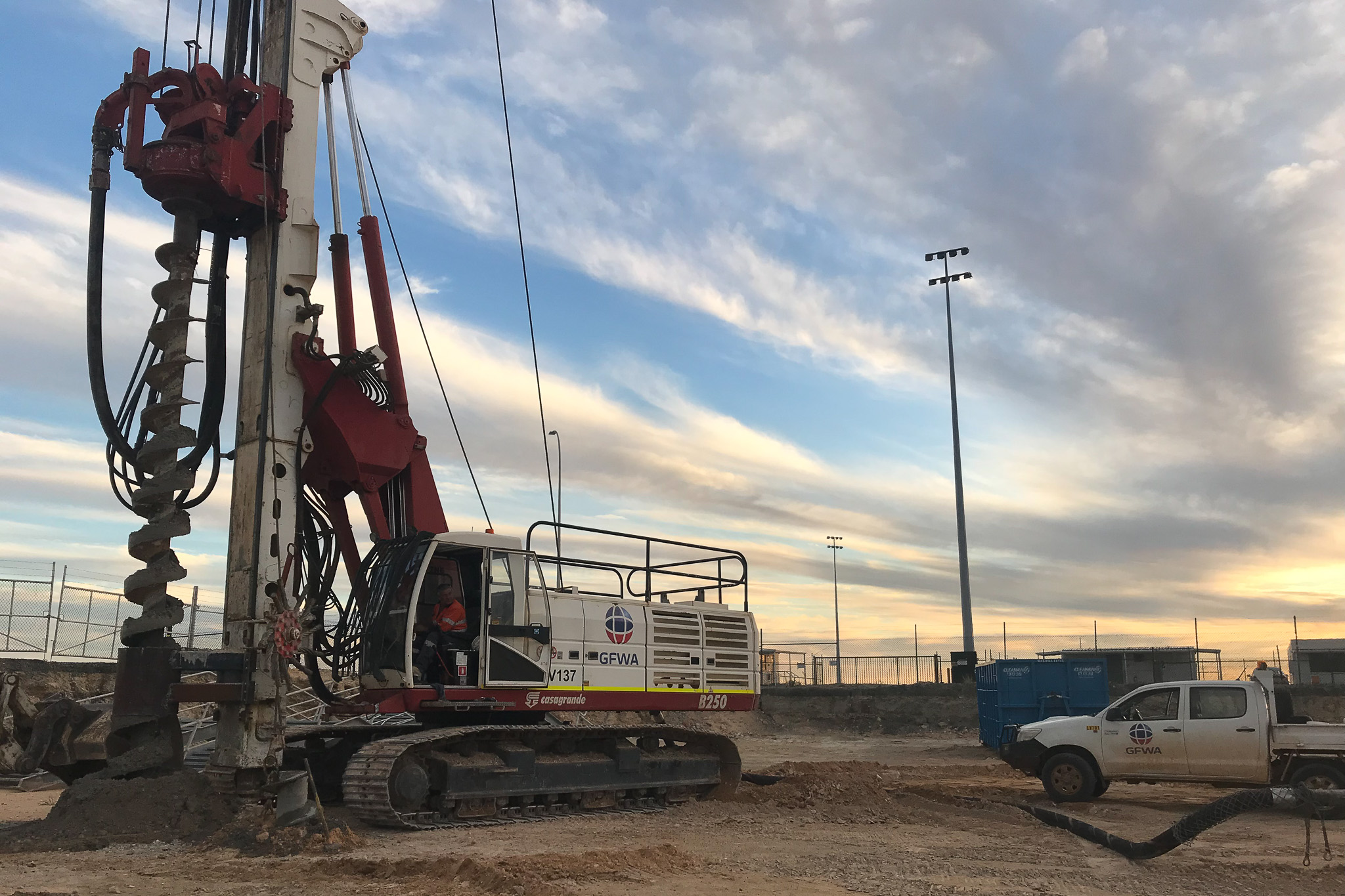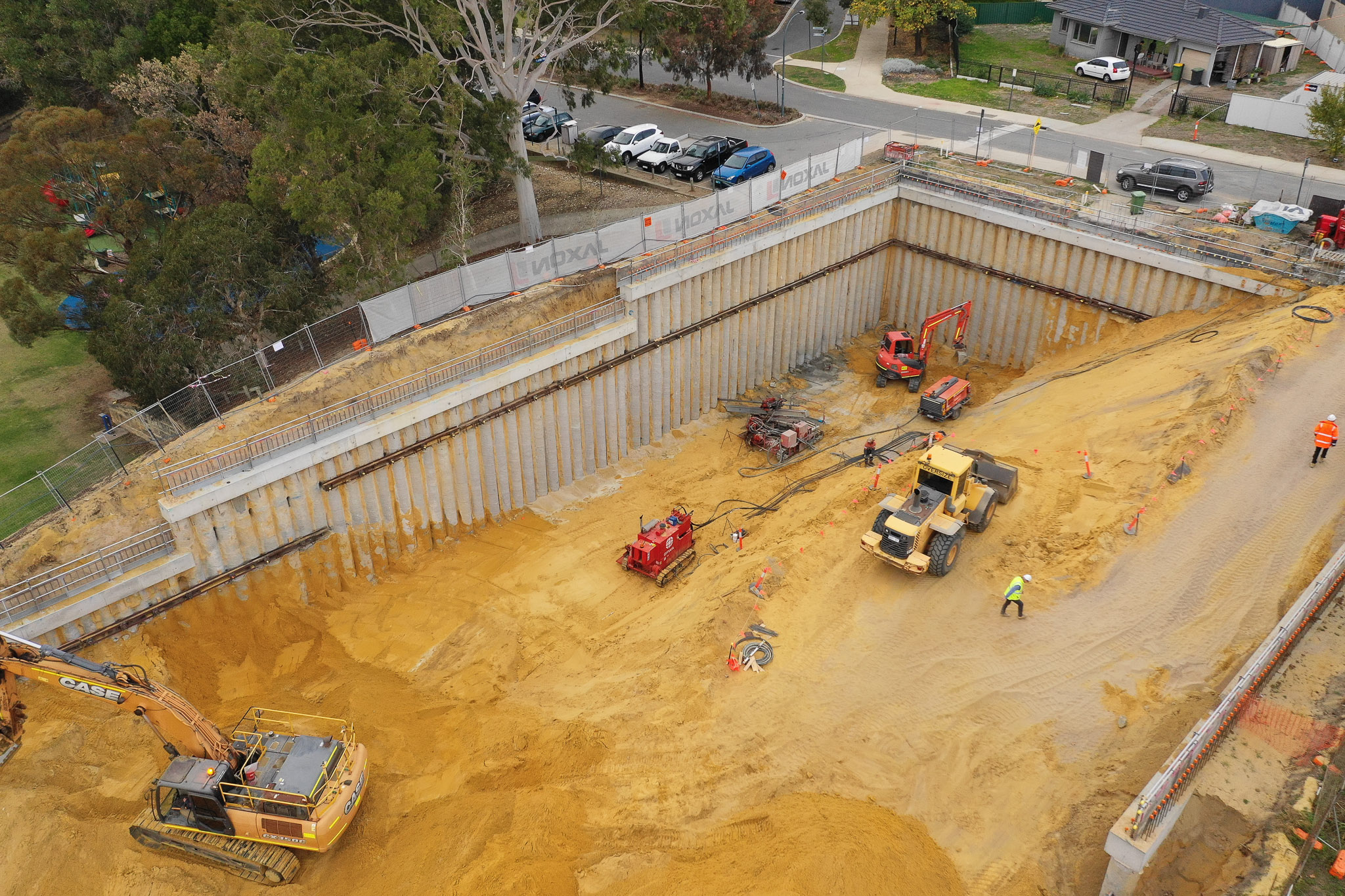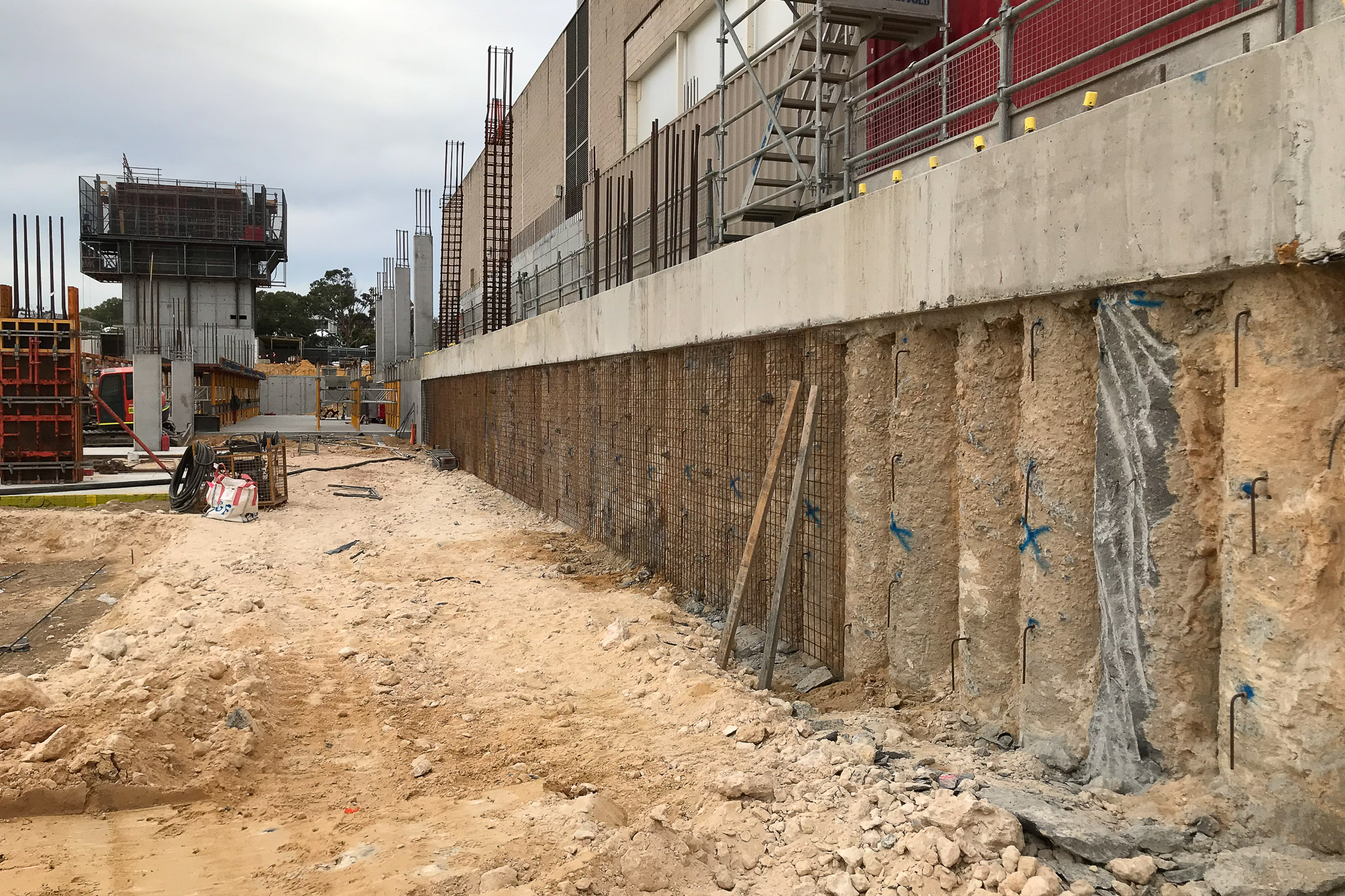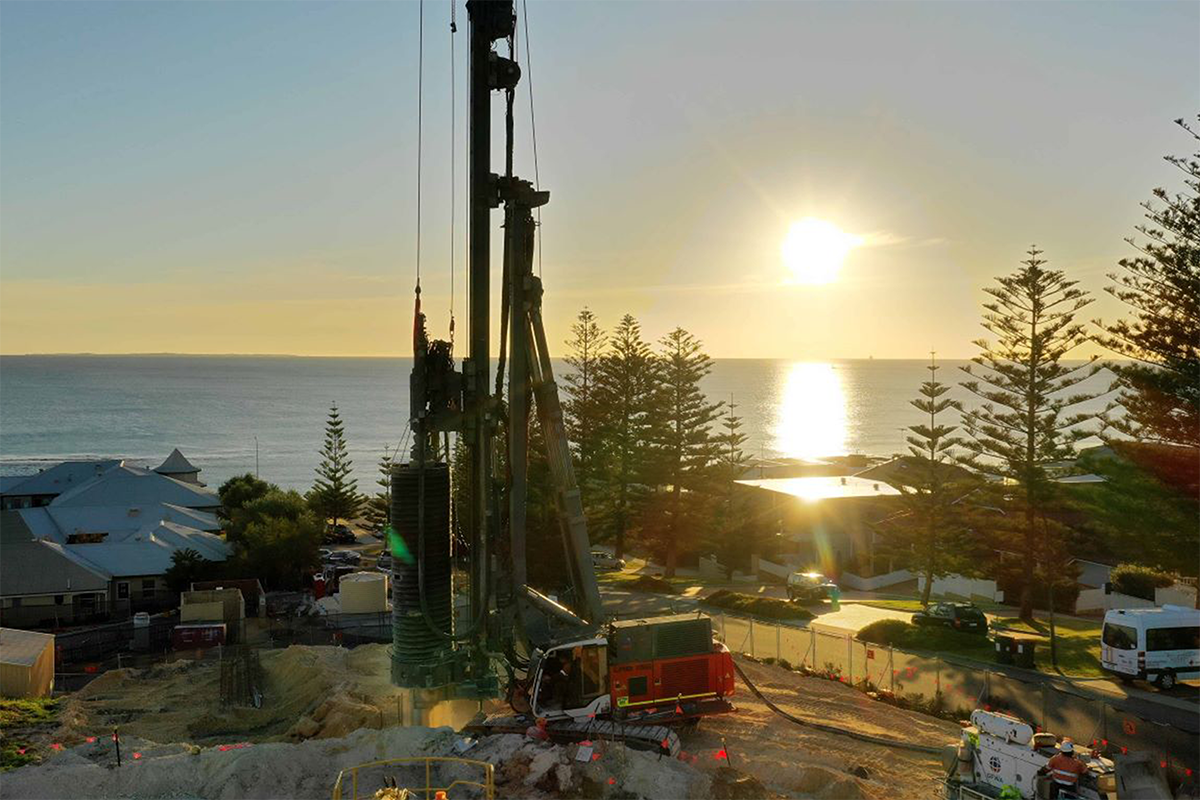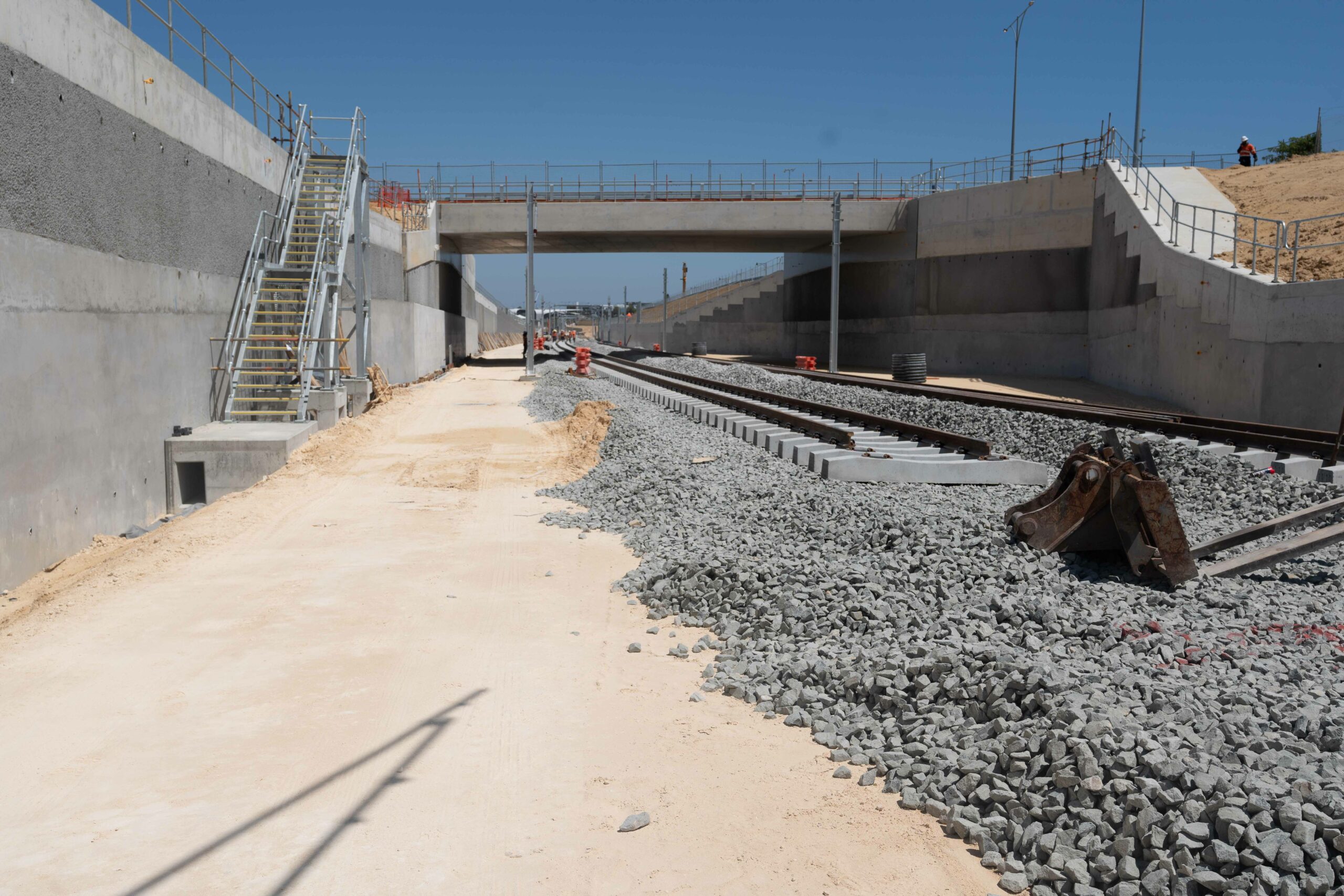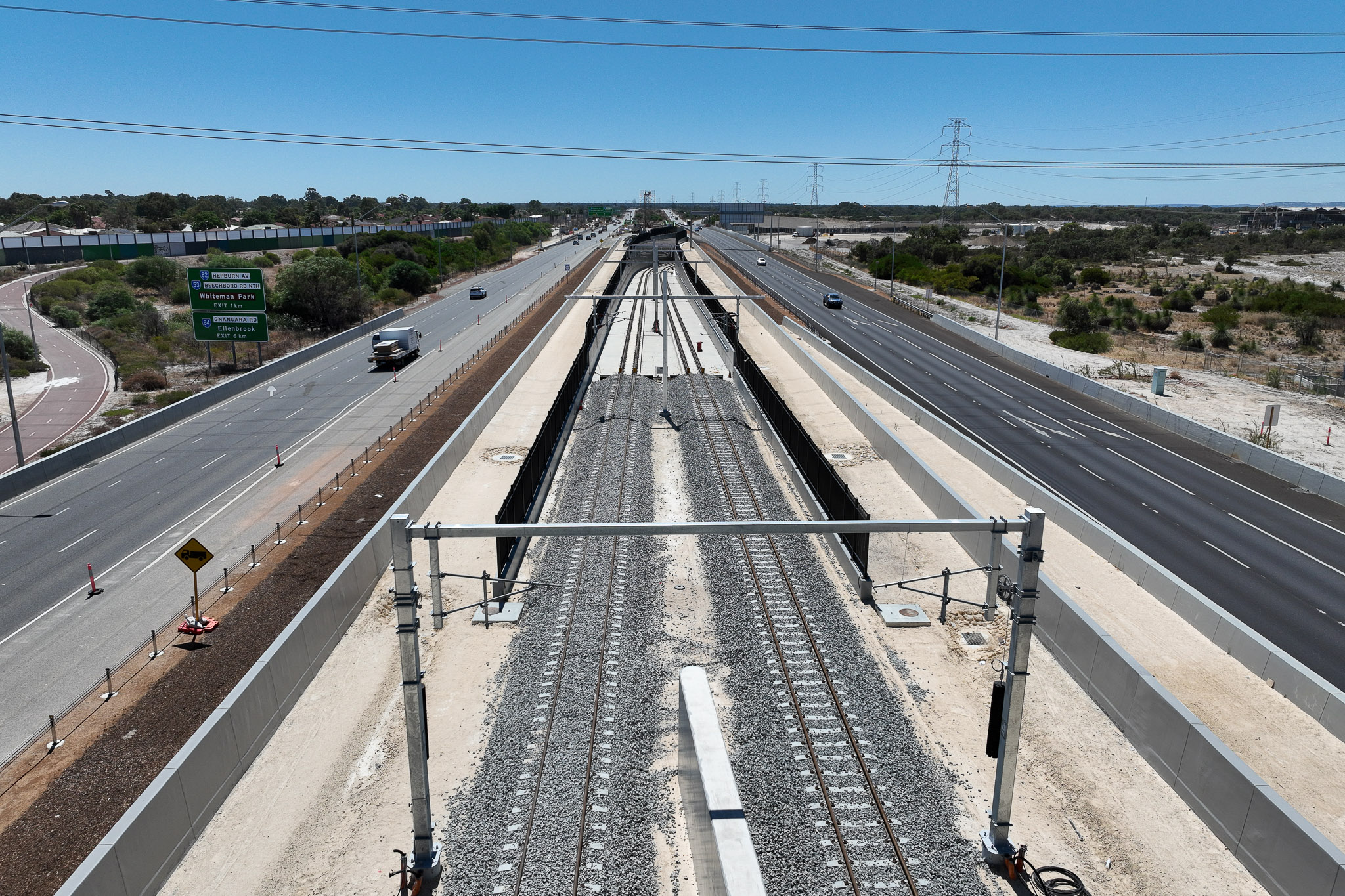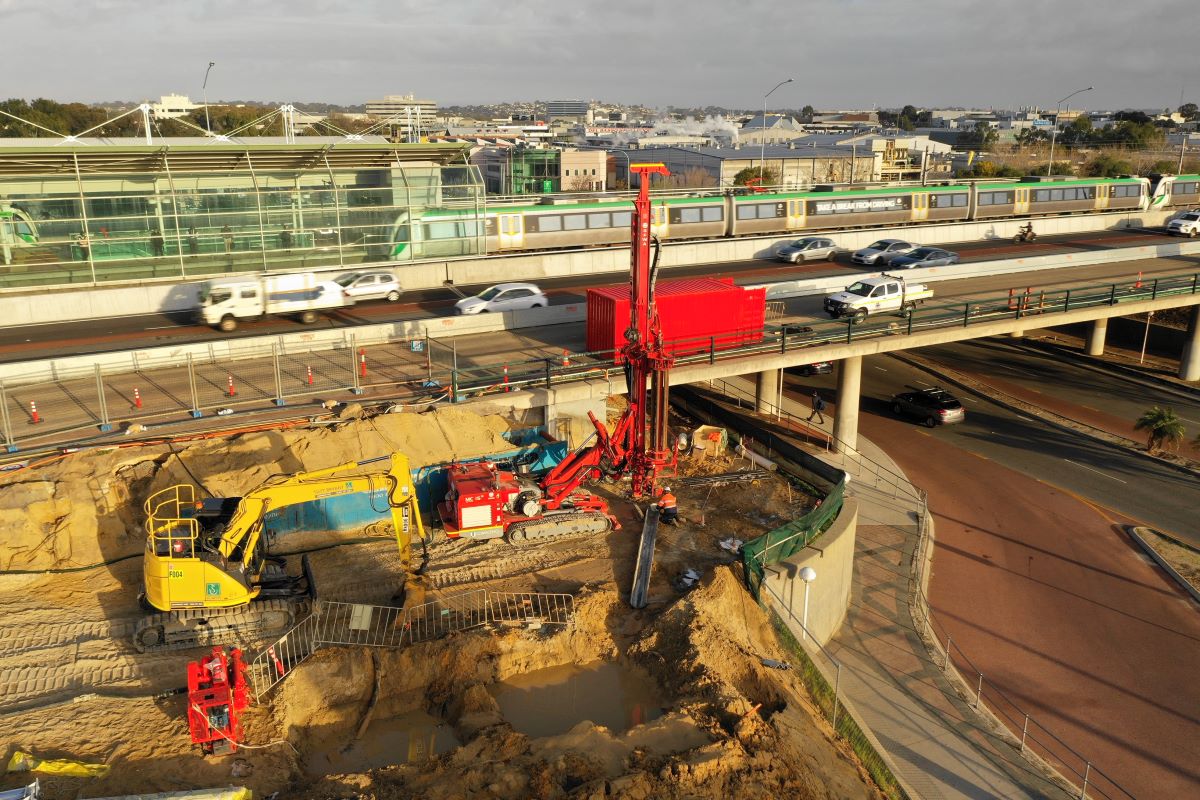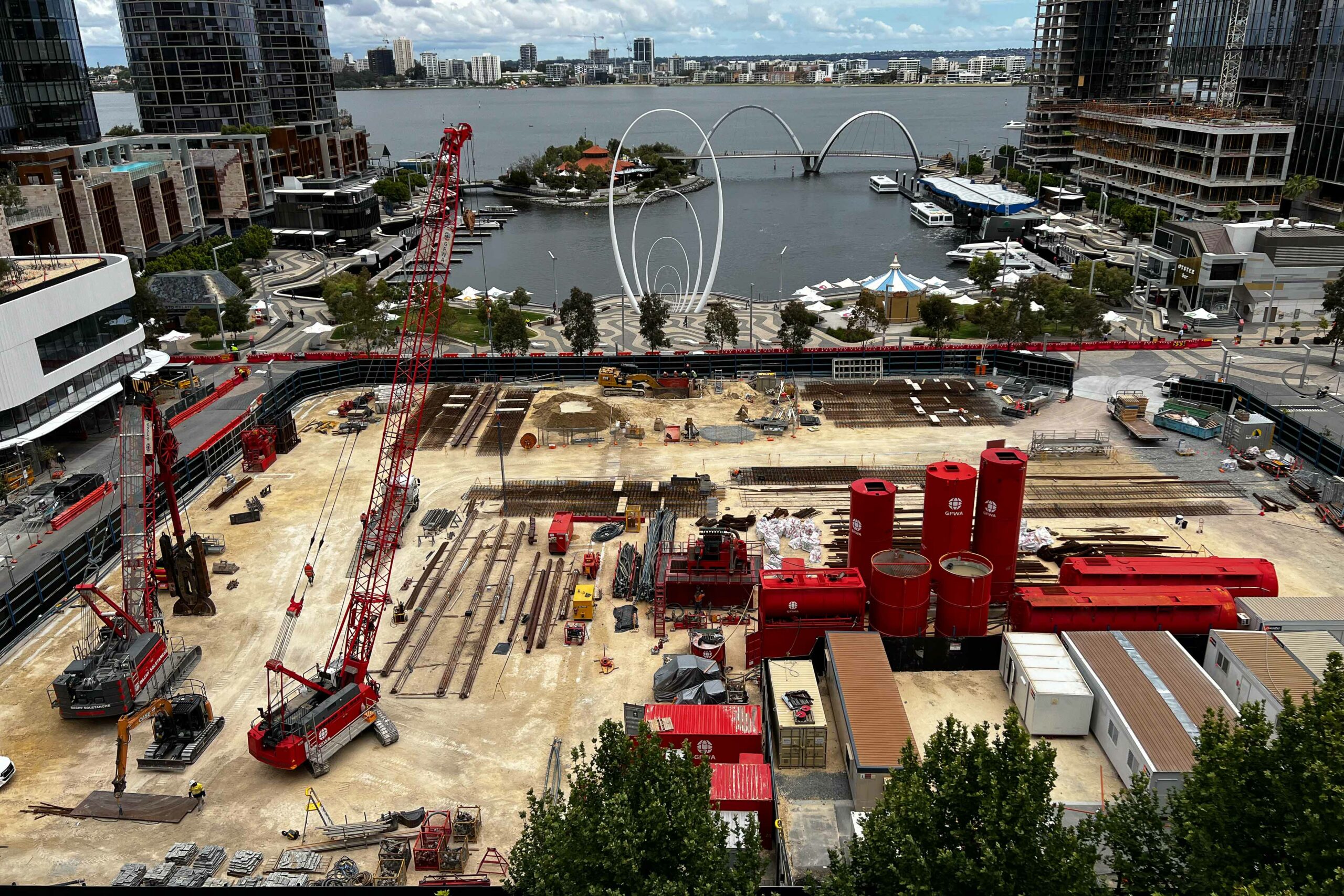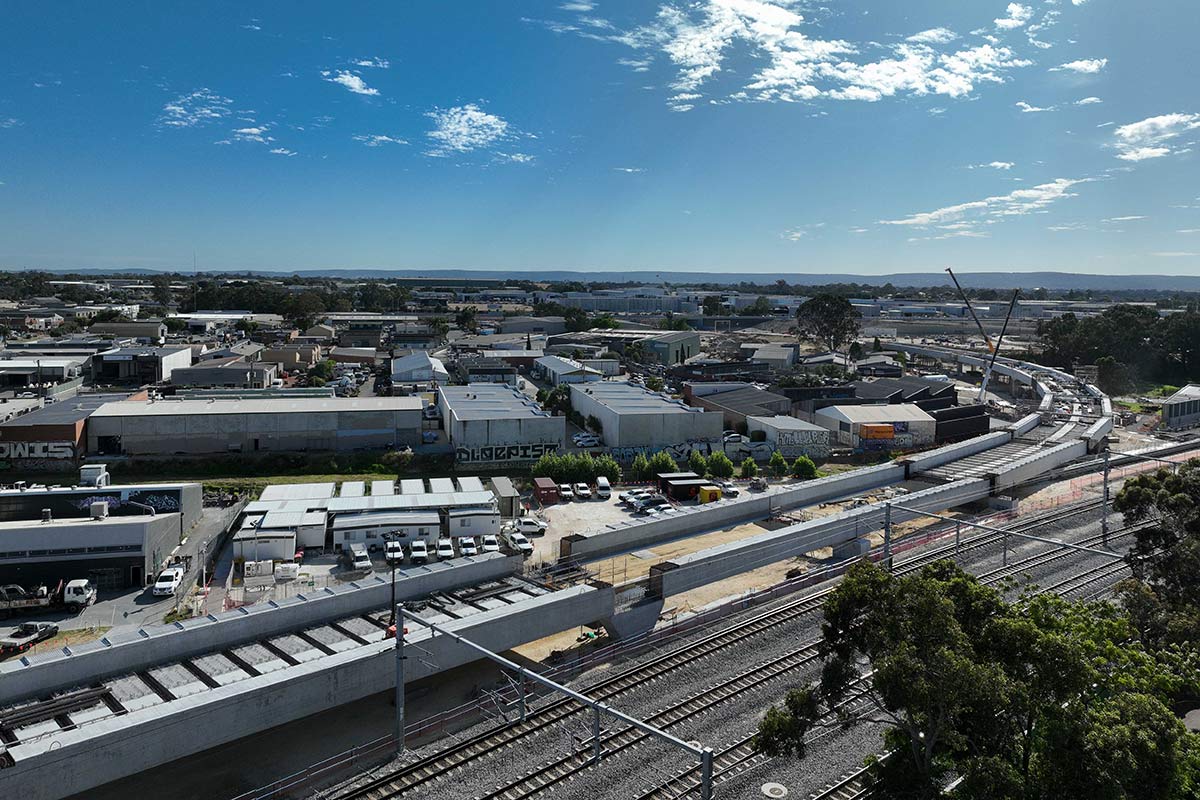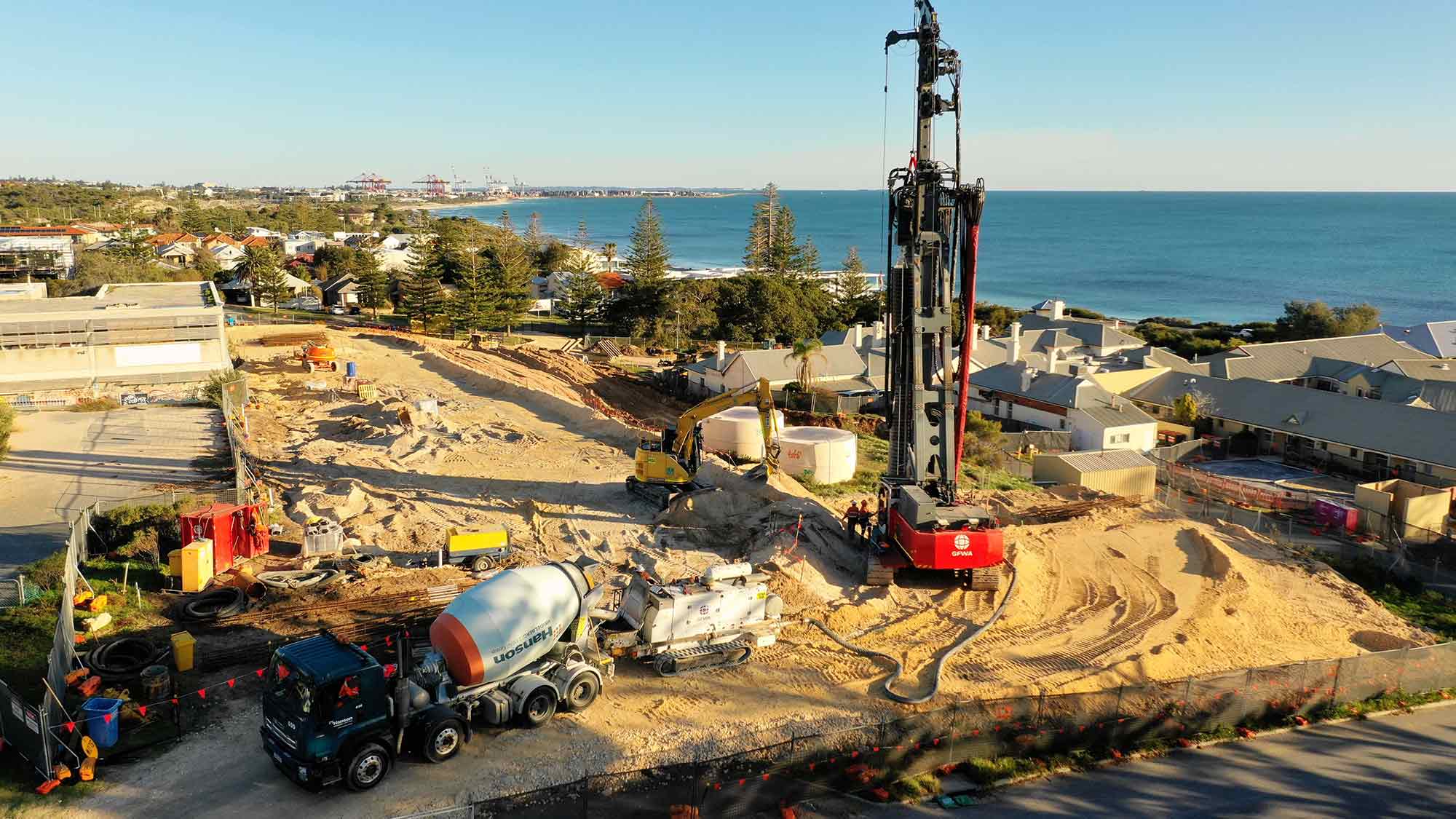Project Description
CFA Pile Construction for Stable and Efficient Foundations
GFWA is an expert in CFA piling, with numerous successful projects within Australia.
CFA Piling: Best for urban construction and noise-sensitive areas. Continuous Flight Auger piles offer stable and efficient foundations, making them ideal for various construction projects.
Our processes
Stage 1: Site Preparation
The construction site is cleared and levelled, with the positions of the CFA piles marked. Access for drilling equipment and materials is ensured. Site preparation involves verifying the alignment and ensuring that the area is ready for the arrival of drilling equipment.
Stage 2: Drilling
A continuous flight auger is used to drill holes for the piles. The auger remains in the ground during drilling, supporting the hole and removing soil simultaneously. The drilling depth and diameter are determined by the project specifications. The auger is advanced into the ground to the required depth, creating a borehole for the pile.
Stage 3: Concrete Injection
Concrete is injected through the hollow stem of the auger as it is withdrawn. The concrete fills the borehole from the bottom up, ensuring that the soil does not collapse into the hole. The continuous flight auger method prevents the hole from collapsing and ensures that the concrete is placed without segregation.
Stage 4: Reinforcement Placement
Immediately after the auger is withdrawn, a steel reinforcement cage is inserted into the wet concrete. The reinforcement provides the necessary structural strength to the pile, allowing it to withstand the loads and pressures exerted by the surrounding soil and structure.
Stage 5: Finishing
The pile head is finished to the required level, preparing it for integration with the superstructure. This involves trimming the concrete to the specified elevation and ensuring that the pile head is properly shaped for connection to the foundation system.
Stage 6: Curing
The concrete is allowed to cure properly before any loads are applied. Proper curing ensures that the pile achieves its designed strength and durability. This stage involves monitoring the curing process and protecting the pile from environmental conditions that could affect the curing.
Stage 7: Quality Control
The piles are inspected for diameter, depth, and concrete integrity. Non-destructive testing methods such as sonic integrity testing or load testing may be used to assess the quality of the piles. Ensuring that the piles meet all design and safety standards is essential for the success of the project.
Related projects

